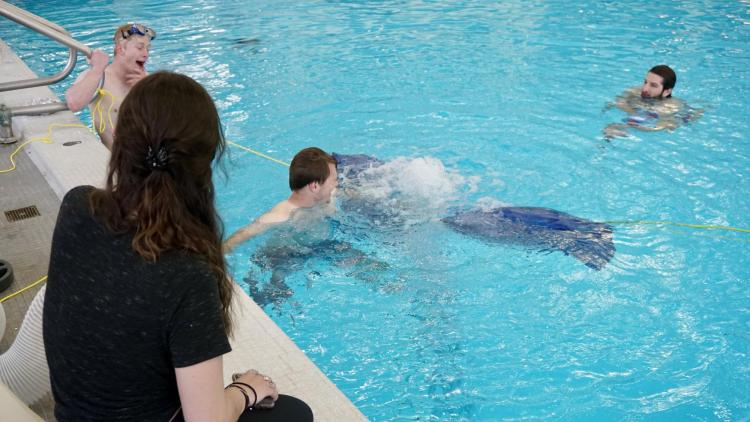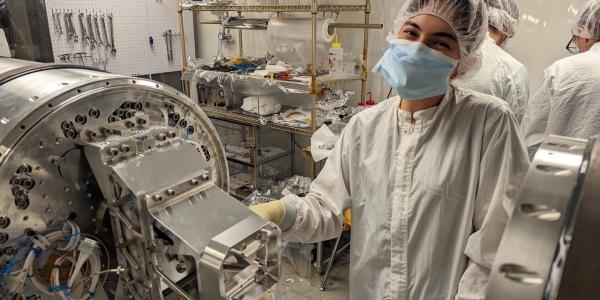April 28 update: The team spent the last few weeks of the spring 2022 semester testing their prototype in the University of Colorado Boulder Rec Center pool. New video shows the underwater vacuum in action, from inside the prototype.
The 200 miles of ocean along California’s coastline was once filled with seaweed called bull kelp. The seaweed created rich, underwater forests until the population began to die out in 2014. In the seven years since then, 95% of bull kelp beds off the coast of California have died.
Urchin Merchants, a team of seniors in the Department of Mechanical Engineering at the University of Colorado Boulder, is tackling that problem by designing and building a large, underwater vacuum that can help reduce one of the bull kelp’s greatest threats – purple sea urchins.
“Our project is really aimed at collecting large amounts of those urchins and improving the collection rates of divers, which is not possible with the current methodology,” said Josh Ayers, the group’s systems and testing engineer.
The number of purple sea urchins living on the ocean floor has exploded in recent years. The population has grown by 10,000%, destroying miles of bull kelp since the urchins eat and live off the seaweed.
Researchers currently estimate that it will take 15 to 20 years to clear the urchin barrens. Urchin Merchants’ specialized suction device could increase collection rates by six times the current rate, decreasing that 20-year timeframe to under five years in a single location.
“We knew we wanted to save the kelp forests and we figured the best way to do that would be removing purple sea urchins rather than planting kelp,” Project Manager Dorothea French said. “We thought we might try to build an autonomous, underwater robot, but that would take 10 to 15 years and we need a solution now.”
The prototype is 11 feet tall, with a large tube at the top that serves as a sorting system. The tube shuffles larger urchins to one side and smaller urchins to another. Any non-urchin material such as small animals or sand go straight out the top. On the other end of the vacuum is a flexible hose that divers can use to collect urchins on the ocean floor.
The team received insight from conservation organizations and professional divers to design this efficient vacuum. The divers wanted a system that was easy to use and inexpensive.

Urchin Merchants tested the prototype in the CU Boulder Rec Center pool.

The seniors used marbles instead of urchins when running their first tests.
“The vacuum uses a highly efficient air lift pump that is able to collect large quantities of small objects from the ocean floor,” said Zach Sorscher, the team’s CAD engineer. “Think of it as a super tool that we would give to a diver to accompany them on their dives to improve collection rates.”
The team spent the spring 2022 semester building the prototype as part of their capstone project in the department’s Senior Design course. They are currently testing the vacuum, with the goal of getting the product in user’s hands.
“We just want to see an impact,” Josh said. “We want more urchins to leave the ocean because of us, whether that means someone pays for the prototype or we give it to a conservation organization as goodwill. It feels like we are doing the right thing either way.”
While Urchin Merchants has focused on the kelp beds in California, they acknowledged that the population boom is a growing issue around the world. There are thousands of acres of urchin barrens on coastlines from North America to Europe and Australia.
The team hopes their prototype will have a meaningful impact and inspire others to advocate for the environment.
“We just want to design and build a project that could help the world,” Logistics Manager Heather Hunt said. “We are using our engineering expertise to make a difference.”
Urchin Merchants recently won fourth place in the New Venture Challenge’s (NVC) Climate Change sub competition for their underwater vacuum. They will be competing in the full NVC competition and presenting their prototype at the College of Engineering and Applied Science’s Engineering Projects Expo on April 22.



